How Do I Identify Crape Myrtle Bark Scale and Treat It in North Texas?

Crape Myrtles are a popular and beautiful addition to many North Texas gardens, but they can sometimes fall victim to pests like Crape Myrtle Bark Scale (CMBS). This pesky problem can affect the health and appearance of the tree.

Recognizing the Signs of Bark Scale
- Bark scale often appears as white or gray waxy clusters on the bark and branches. These pests can cause the bark to appear sooty as they produce a black, mold-like substance.
- One notable sign is the presence of a black, sooty mold. This mold results from the honeydew secreted by bark scale insects, which encourages mold growth. If you notice blackened bark or branches, it’s an indicator that bark scale might be at work.
- Another indication of an infestation is a gradual loss of plant vigor. As the scales feed on the sap, the crape myrtle may appear less vibrant, with leaves showing signs of discoloration or wilting.

Inspecting Your Crape Myrtle Closely
Carefully examine the trunks and branches. Look for tiny insects hiding in the crevices of the bark and check for any leaf discoloration or wilting.
It’s important to conduct these inspections regularly, especially during warm months when scale activity increases. A thorough inspection will often reveal the presence of juvenile scales, which can be challenging to spot due to their small size.
During your inspection, shake the branches gently. If a fine white powder falls, it could indicate the presence of young scales that are not yet producing honeydew.
Implementing DIY Treatment Solutions
Begin by washing off the scale with a strong spray of water. You can also gently scrub the affected areas with mild soap and water to remove the scale insects.
Using a soft brush, scrub areas of thick infestation. This mechanical removal can be particularly effective at disrupting the scales’ protective barriers, making subsequent treatments more efficient.
Create a solution using one tablespoon of dish soap in a gallon of water. Apply this mixture on the scales, allowing it to sit briefly before rinsing. This can help reduce the population significantly.
Tree Health Care Plans
Systemic insecticides (neonictinoids) are currently the most effective control for crape myrtle bark scale. Having a Tree Health Care technician annually provide treatment like soil amendments in addition to managing disease and insects on sick trees will help keep your trees healthy.
Monitoring and Prevention
Regularly inspect your crape myrtles for early signs of infestation. Maintain the health of your trees with proper pruning and fertilization to prevent future issues.
Schedule annual assessments with a local certified arborist to help monitor and manage the health of your trees.
At Texas Tree Surgeons we love trees. We have several blogs on crape myrtles / crepe myrtles to help homeowners with multiple questions surrounding care for them. By learning to identify the pest and apply the appropriate treatments, you can protect your crape myrtles and enjoy their stunning blooms year after year.
Related Blogs
Similar blogs related to this topic


Hail Damage and Trees
Beware of hail damage on your tree. If your tree is severely damaged from hail do not stand under the drip line (canopy) until it has been professionally assessed by a TRAQ certified arborist and…
Read more

The Benefits of Air Spading for Tree Care in North Texas
Urban trees require more care to maintain health than trees in a forest. They face multiple stressors which together create a cycle of decline for the tree. By changing or alleviating a single stress to…
Read more
How Often Should You Trim Your Trees?
Tree trimming is a crucial part of maintaining a healthy, safe, and beautiful yard. But how often should you really be trimming your trees? We’ll explore the ideal trimming schedule for your trees and why…
Read more
